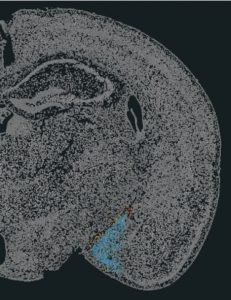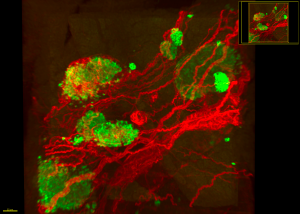Our lab is focused on understanding the roles of neural circuits in metabolic regulation and their contribution to diseases such as type 2 diabetes. Our long-term goal is to develop novel, targeted therapies that modulate neural circuit activity to improve glucose control and treat T2D. To do so, we work in three areas

Central circuits regulating blood glucose
Our work aims to understand the crucial roles of key CNS circuits and neural populations in glucose homeostasis and how these are disrupted by stress and obesity to contribute to metabolic disease We apply state-of-the-art tools to assess neural activity, identify distinct neural populations, and modulate neural function to determine how hypothalamic and extra-hypothalamic circuits regulate peripheral organs, such as the liver, pancreas, and adipose tissue, to control blood glucose.
Peripheral circuits regulating blood glucose
Our projects aim to identify how peripheral nerves (autonomic and sensory) innervating metabolic organs regulate glucose homeostasis. We use viral tracing, tissue clearing and 3D imaging along with highly targeted viral tools to determine the structure and function of specific peripheral neural circuits in metabolic regulation.

Technology development
We develop new technologies and optimize existing tools to better address our research questions. We are pioneering the use of magnetic fields to regulate neural activity in the CNS and peripheral nerves – a technique that, like optogenetics, has broad applications but which is non-invasive. We have also optimized tissue clearing protocols for pancreatic tissue and viral tools to target peripheral innervation for imaging and modulation.
